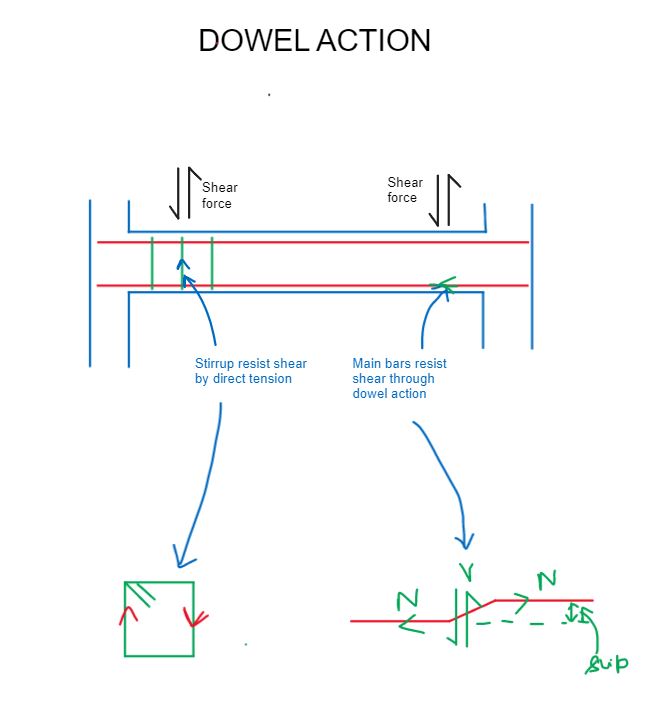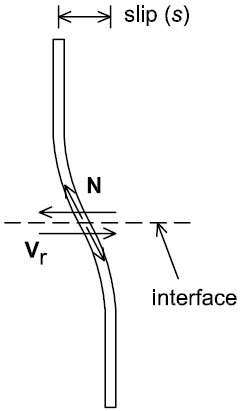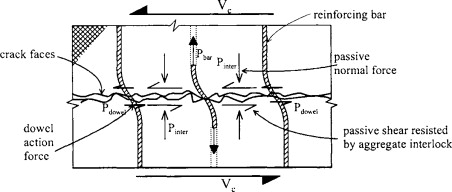Resistance against shear force in reinforced concrete is generally provided by both concrete and reinforcement together.
The resistance provided by concrete depends induces direct shear in concrete section & the capacity depends upon the percentage of main(flexure) reinforcement in concrete.
[1] The resistance given by reinforcement is through the direct tension in the rebar, that’s the rebar experiences direct tension in it & by virtue of that it provides shear resistance.
[2] So in most cases than not the shear rebar in reinforced concrete gets direct tension, beam stirrups, column ties are some examples of this.

[3] But there are few instances when shear bars experience direct shear and provide resistance against shear force. And this phenomenon is referred as dowel action.
[4] Dowel action is usually the mode of transfer shear forces across a joint between two concrete members.
In beam which don’t have conventional shear stirrups the flexure reinforcement experiences dowel action & provide shear resistance; similar phenomena can happen in RCC slabs as well.

[5] The length of the dowel is an important parameter for deciding the contribution of dowel action in shear resistance.
[6] Dowel action is also experienced in quite commonly in precast concrete connection where transfer for shear forces is happening across the joint.
This is post on shear transfer using dowel action, share your practical experience of using the phenomena. Any comments or suggestions are welcomed.

Comments are closed